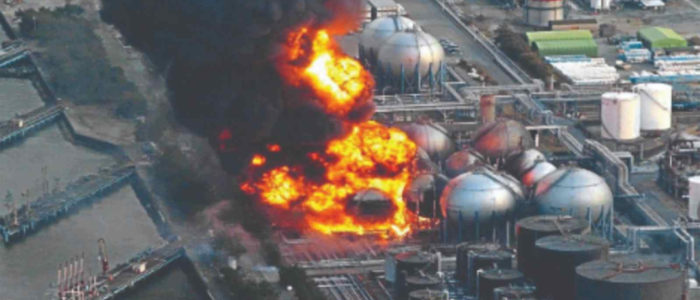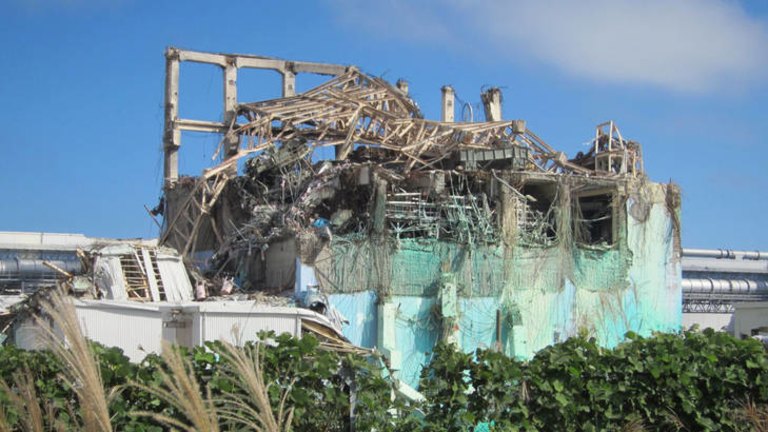
On March 11, 2011, the largest earthquake ever recorded in Japan causes massive devastation, and the ensuing tsunami decimates the Tōhoku region of northeastern Honshu. On top of the already-horrific destruction and loss of life, the natural disaster also gives rise to a nuclear disaster at the Fukushima Daiichi nuclear plant. The Fukushima disaster is considered the second-worst nuclear disaster in history, forcing the relocation of over 100,000 people.
During the emergency, each of the three operational nuclear reactors at the Fukushima plant shut down successfully, but the backup power and cooling systems failed. As a result, residual heat caused fuel rods in all three reactors to partially melt down. As crews searched the rubble for survivors and the nation reeled from the earthquake and ensuing tsunami, the nuclear disaster unfolded over the course of several days. Reactors 1 and 3 exploded on March 12 and 14, respectively, prompting the government to evacuate everyone within a 20km radius. Another explosion in the building housing Reactor 2 on March 15 released even more radiation, and thousands of people left their homes as workers used helicopters, water cannons and seawater pumps to try to cool the overheating facility.
The full extent of the fallout became apparent over the ensuing months, with the government eventually evacuating all residents within a 30km radius of the plant. No deaths were initially attributed to the incident, although this was of little comfort to the 154,000 who were evacuated or the loved ones of the more than 18,000 people who lost their lives as a result of the earthquake and tsunami. Some have suggested that such a large evacuation was not necessary, as radiation levels appear to have dropped below what was expected in the immediate wake of the accident.
Though many were able to return to their homes, a 371-square-kilometer “difficult-to-return zone” remains evacuated as of 2021, and the true toll may not be known for decades. In 2018, the government announced that former plant worker who had served during the meltdown was the first death officially attributed to radiation from the disaster, which today is considered second only to Chernobyl in the ranking of infamous nuclear incidents.
It is my sincere desire to provide readers of this site with the best unbiased information available, and a forum where it can be discussed openly, as our Founders intended. But it is not easy nor inexpensive to do so, especially when those who wish to prevent us from making the truth known, attack us without mercy on all fronts on a daily basis. So each time you visit the site, I would ask that you consider the value that you receive and have received from The Burning Platform and the community of which you are a vital part. I can't do it all alone, and I need your help and support to keep it alive. Please consider contributing an amount commensurate to the value that you receive from this site and community, or even by becoming a sustaining supporter through periodic contributions. [Burning Platform LLC - PO Box 1520 Kulpsville, PA 19443] or Paypal
-----------------------------------------------------
To donate via Stripe, click here.
-----------------------------------------------------
Use promo code ILMF2, and save up to 66% on all MyPillow purchases. (The Burning Platform benefits when you use this promo code.)







I love the smell of a nukular (Bushism) fire in the morning.
Just because a little radiation is drifting towards the left coast of the US is of little concern.
Nothing to see here, move on. A little radiation is good for you.
Talk about memory lane today!!!
The Fukushima disaster was one of the inspirations for the Family of Families purchase of not only the North Atlantic Sea Salt I have stored in my storeroom, but also the rest of the case of MISO I purchased.
I sent some to someone here longagoandfaraway because of its intense effect upon the real engine our human health: the stomach.
I think it, like many of my other good intentions, got lost in the mail.
The coral reefs around there are probably all dead now, so I wouldn’t try the MISO now.
I don’t know that the salt would be contaminated but we got a truckload from the North Atlantic the next week and I have two 50 lb bags down there. My son made fun of me for the blocks of salt until my cousin from India brought us Himalayan salt rocks and explained how they are used. With an ice pick, you chip off a small chunk and put it into a small cup of warm water. Then, if you need salt on your food, you sprinkle the salty water onto your food instead of wasting the precious seasoning.
The MISO has a lot of salt in it too.
Okay, my ramblings regarding Fukushima are done, but there is a lot of truth in the folklore regarding MISO.
The box I got had fermented seaweed in it too. Yum.
A story presented as if the crisis is over. That’s just what they want you to think. The radiation continues to pour out.